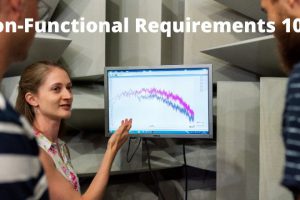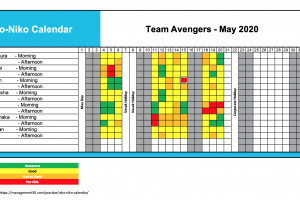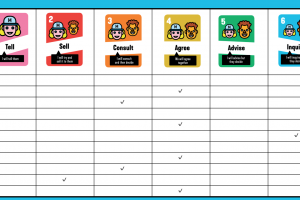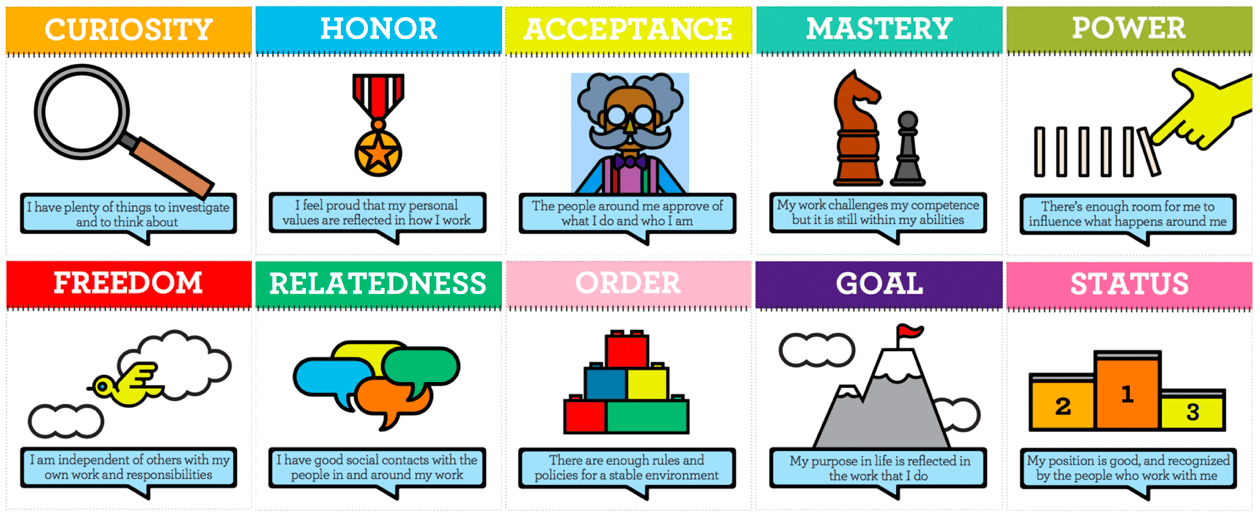
Moving Motivators of Remote Scrum Teams in Lockdown
Scrum Masters play an important leadership role in enabling the success of a team. They are expected to play the role of a problem solver, protector, and process coach of a team. Hence, it is important that they remain energized and motivated at all times.
Scrum team members would look for motivation from within the team during these tough times that the world is going through. Teams will look up to their leader and behave accordingly. The confidence and exuberance that the scrum masters portray will rub off on other team members. Thus, it is important for the Scrum Masters to be energetic and motivated at all possible times.
What motivates scrum masters? How are their intrinsic motivation factors affected during the pandemic? What can be done to bring predictability to it and how can the motivators be used for the betterment of the project, product, and the team? Here I am discussing an activity I did with a group of scrum masters from my current organization.
What are Moving Motivators?
Motivation is someone’s inner drive to work toward achieving his or her goals. Individuals get motivated in different ways. Firstly, let me explain a bit about traditional motivation theories and the categories of motivators.
I am sure that you all have heard about traditional theories of motivation. The most popular theory of motivation is the Maslow’s hierarchy of needs which talks about 5 levels of needs which motivates individuals to achieve a higher level namely; basic needs, safety needs, love needs, esteem and self actualization. Frederick Herzberg’s two factor theory which describes hygienic and motivation factors that leads to job satisfaction, and McClelland’s Needs theory which describes need for power, need for achievement and need for affiliation as drivers for higher levels of motivation are some other most popular theories of motivation.
All traditional motivation theories describe extrinsic and intrinsic motivation factors. In other words, they describe the external factors such as salary, bonus, work itself, people we meet, work environment and facilities, etc. and internal aspects such as respect, the feeling of achievement, sense of power and freedom, etc. as being pivotal factors to motivate individuals. Which of these factors are most critical for knowledge workers like Software professionals? Are the traditional theories of motivation suitable for the information era?
Management guru’s argue that people get motivated in different ways at different points in their careers and in different situations. For example, even though factors such as salary, and support from the superior is important for a newcomer an experienced individual look for more intrinsic factors for motivation. Jurgen Apello through his studies and presentations in management3.0 introduced 10 intrinsic factors that motivate individuals.
The Moving Motivators is a game that can be played with a group of people to ascertain what makes them tick when existing in a particular context. The Moving Motivators game is based on ten Intrinsic Desires introduced by Jurgen Apello and a group of practitioners. Just to recap, intrinsic motivators are factors that come from within a person that makes them achieve something better.
The ten Intrinsic Desires (CHAMPFROGS) as specified by Apello are as listed below.
Curiosity
I have plenty of things to investigate and to think about.
An individual’s urge to try out and explore new things, ideas, situations specify curiosity. This is a characteristic of inquisitive individuals who seek out to explore the unknown and are open to new experiences.
Honor
I feel proud that my personal values are reflected in how I work.
People tend to take pride in whatever they do. The feeling of being honored for doing something or the feeling that own goals and objectives are being met motivates individuals to strive to do better.
Acceptance
The people around me approve of what I do and who I am.People are social animals.
They like to be acknowledged and accepted. From our younger days we seek attention and the urge to be accepted as part of a group or tribe, or for your contributions to be realized are key drivers of motivation.
Mastery
My work challenges my competence, but it is still within my abilities.
Individuals like to be good at what they do. They like to continuously improve to improve knowledge and skills. The urge to sharpen their skills even in a specific, narrow, and niche area and be recognized as an expert in that particular area will drive individuals.
Power
There’s enough room for me to influence what happens around me.
People like power. Power may come in different forms and for different reasons. Individuals may get power due to their knowledge, ability to power or reward someone, ability to refer to someone, or because of their experience and expertise. The capability to have an impact on what is happening and the outcome of something may drive individuals.
Freedom
I am independent of others with my work and my responsibilities.
The space that is given to individuals to think and act independently may promote innovation and new experiences. This freedom in terms of time, space, and responsibility may motivate individuals in certain ways.
Relatedness
I have good social contacts with the people in my work.
Again, this goes in line with acceptance. People like to be part of a group and be able to create effective and powerful relationships. The opportunity to meet or work with influential and knowledgeable individuals may drive people to achieve more. Some also define this as the ability to relate one’s self to others or to certain contexts.
Order
There are enough rules and policies for a stable environment.
There is a group of individuals who get motivated by stability. They like process, clarity of thought, and clear instructions when carrying out work. Yes, they may be seen as risk-averse individuals but this again can be a source of motivation.
Goal
My purpose in life is reflected in the work that I do.
Everyone has an ultimate goal in life. May it be as simple as to be the best at what we do or it can be a certain end state one wants to achieve at a certain age in life, such as retirement. Individuals may get motivated if the work they do allows them to achieve that end goal.
Status
My position is good and recognized by the people who work with me.
Some individuals may get motivated by the name and glory. The positional or role-based power bestowed on someone can drive them on a daily basis.
What motivates a person might be stable in general. In other words, the motivational drivers may not change frequently. However, certain situations, experiences, and exposures in life may shift each factor up or down or even horizontally. Hence we call these as moving motivators. It is important to understand what factors motivates someone the most at a given point in time and also see how these fluctuate due to certain changes in the external environment. A motivation board can be created to identify what matters to someone the most at a certain point in time.
How did I use the Motivation Board?
Below are the steps I followed when practicing the moving motivators exercise with the group of scrum masters.
- I created 10 frames in Google Jam boards for each scrum master with sticky notes for each intrinsic motivator
- I explained the 10 motivators and the objectives of the activity to the participants
- I time-boxed the activity to 5 minutes and ask the scrum masters to arrange the 10 cards left to right with the left most being what intrinsic motivator matters to them the most in their lives and careers
- I then asked the participants to think about how the current Covid-19 pandemic has affected their lives and careers
- Now I requested the participants to move the cards up or down based on whether the factor has increased or decreased impact within the current context
- I allowed participants to reflect on the movement of cards and see the deviation
- I provided another scenario to the Scrum Masters. What I asked them to think was a hypothetical scenario of them losing their jobs.
- I asked the participants to rearrange the cards (if needed) or move cards up or down based on the change in the context
- Finally, I spent some time reflecting on the new findings with the participants
A moving motivators board created by one of the team members is as shown below.
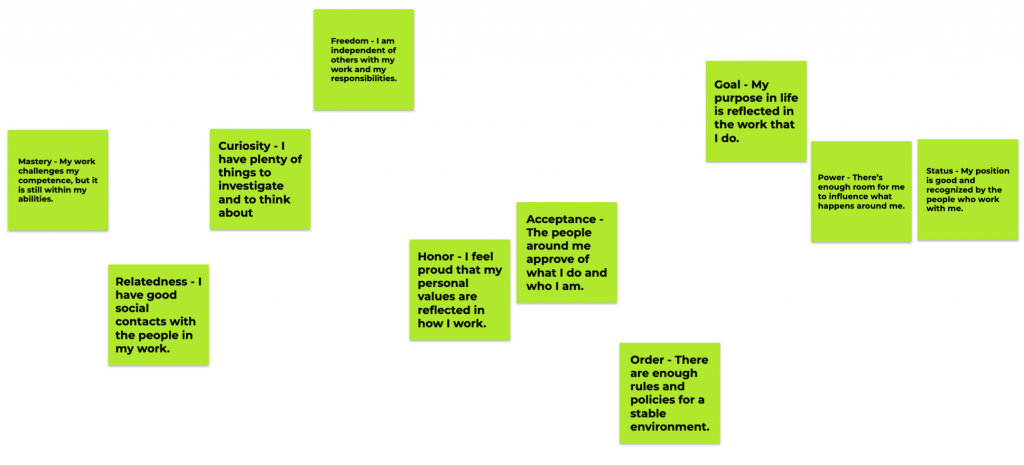
Learning & Actions
Key learnings and action items from the moving motivators exercise are as listed below.
- It is an ideal opportunity for the participants to identify what matters to them the most right now
- It is a great way to create possible alternative contexts and see how the motivational factors would react
- It helps participants create courses of mitigating action based on possible futures
- It is a great way to identify motivators of team members and to identify the different thought processes of team members
- It is an ideal way to make intrinsic motivators visible
- In terms of next actions,
- The scrum masters decided to practice the moving motivators exercise with their respective agile teams
- The scrum masters decided to revisit the board from time to time to see how the motivational factors have changed
- I as the agile coach identified a few needs and energizers to be tried out with the scrum masters based on their motivators.
Final Thoughts – Motivations for Remote Scrum Teams
What are your thoughts about the motivation board? Have you used the moving motivators with your team members? What are your findings? What motivates you the most right now? Have you done this sort of activity or would you like to try it out with me? I would like to hear from you!

